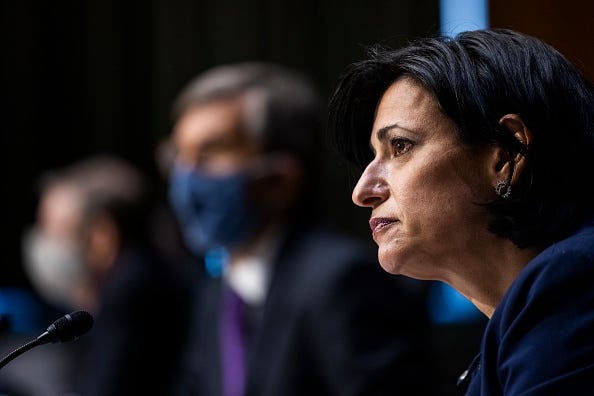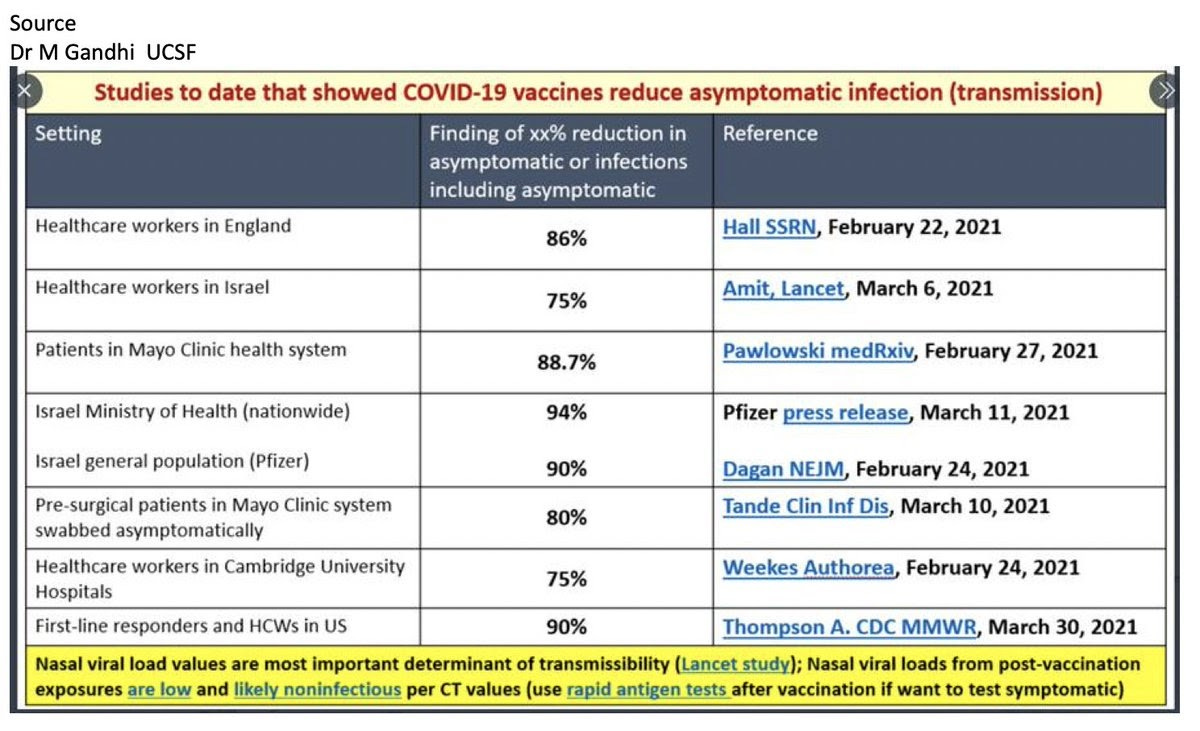The CDC’s mask policy gamble.
An evidence-based policy gamble to incentivize vaccinations—that could backfire.
On Thursday, the CDC abruptly announced a sweeping new set of guidelines on masking for fully vaccinated Americans: no masking requirement indoors or outdoors.
This is, of course, a broad about-face—which almost nobody saw coming. Just a week before the guidelines changed, Dr. Anthony Fauci himself had been talking about seasonal masking.
So why did the CDC change their guidelines? It’s a combination of changing science, a realistic assessment of vaccine incentives, and response to criticism. But is it the right decision? Let’s cut in.
The science.
In order to safely allow fully vaccinated people to go without masks, the CDC needed to answer two scientific questions on which there has been a slowly emerging consensus.
The first question: Are vaccinated people, themselves, at risk for serious COVID-19 infections? Evidence from Phase III clinical trials of the three emergency-authorized COVID-19 vaccines showed extremely high levels of efficacy, but efficacy doesn’t always map directly to effectiveness—how well a vaccine will work in the real world. Thankfully, recent studies have shown that the vaccines are extremely effective in the real world too.
For example, one study by the CDC released on Friday followed healthcare professionals at 33 different sites in the US. It found that full vaccination was 94% effective against symptomatic COVID-19. Though there were “breakthrough” infections, they were extremely unlikely to yield symptoms. And when there did, they were nearly universally mild.
Which gets to the second question: Can vaccinated people transmit the virus? Increasingly, the scientific consensus is that vaccines prevent transmission as well. One study of 5,000 breakthrough infections points to a mechanism: even when they do get infected, vaccinated people carry substantially less virus in their nasopharynx, making it harder to pass on.
The policy gamble.
With the basic scientific questions about vaccine settling, the CDC had to decide how to leverage this new understanding in the context of where we are in the pandemic: Cases are nearing an all-time pandemic low, and yet there remain a sizable minority in the US who are holding out on receiving their vaccination (as I discussed in an earlier post). Getting these folks to hurry up and get the shot is the knottiest problem in public health right now.
This policy is a gamble on the part of the CDC to do just that. On the one hand, it could incentivize enough people to finally get their vaccines to get back to life as they once knew it so that all of us can get back to life as we once knew it. On the other, it could backfire—the unvaccinated may free-ride on the policy to forego not just their vaccines, but their masks too. Putting themselves and others at risk in the process, they could perpetuate the pandemic.
Though this decision is a gamble because there’s almost no reliable way to differentiate between vaccinated and unvaccinated people, it’s not as risky as it may seem. The CDC’s bet here is hedged in the incentives that private institutions have to ensure the safety of their spaces. They’re betting that these institutions—employers, hotels, restaurants, bars, theme parks—will institute vaccine verification to cater to vaccinated people who’d rather not wear masks while keeping their spaces safe. Enough institutions acting on this incentive could finally nudge vaccine holdouts.
The equity issue underneath the risk.
But then there’s the alternative scenario—where the CDC’s policy gamble fails. The consequences of failure, like the rest of the pandemic, will not be borne equally.
There are people who still can’t get vaccinated, like most children. There are also people for whom the vaccines are less effective because of underlying immunodeficiency. There are communities where vaccination rates are still quite low—only 27% of Black Americans are fully vaccinated. And of course there are “essential workers” who’ve been forced to work through the worst of this pandemic and could be exposed unnecessarily, yet again, if companies follow Walmart’s lead and drop their masking requirement based on the “honor system.” This policy puts all of these groups at higher risk.
How should these folks protect themselves? Masks, of course. But the CDC’s new policy has put the agency’s imprimatur on taking the masks off, grist for those who want to pressure people who are choosing to keep their masks on. Already, we’re hearing anecdotes about people being bullied to take their masks off. This policy could make it that much harder to continue to wear masks for people who still need them.
That’s why, though I’ll be taking my mask off outdoors, where evidence demonstrates that transmission rates are exceedingly low, I’ll be keeping it on in indoor public spaces—at least for now. After all, my unvaccinated 3-year-old is hyper aware of social norms and follows my lead. And for so many others who rely on masks to stay safe, that social norm could be a life-saver.





